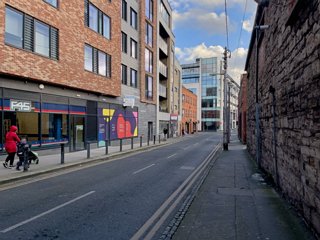EXPLORING GRANGEGORMAN LOWER
Grangegorman Lower: A Dublin District Transformed
The Grangegorman Lower district in Dublin, encompassing both a street and a wider neighborhood, boasts a fascinating history that intertwines with the city's social and institutional evolution. Once primarily a vast mental health asylum, it has undergone a dramatic transformation in recent years, culminating in the establishment of a vibrant new university campus. However, this redevelopment has not been without controversy, highlighting the ongoing housing crisis in Dublin.
From Asylum to Academia
Grangegorman Lower's origins lie in the early 19th century when the Richmond Lunatic Asylum was opened in 1814. Designed by renowned architect Francis Johnston, it became a sprawling institution reflecting the then-prevailing attitudes towards mental health. For over a century, Grangegorman served as a primary psychiatric facility in Ireland.
During the 20th century, shifts in mental healthcare led to the gradual closure of large asylums like the Richmond. The institution saw a decline in patient numbers, and by the time of its final closure in 2013, the once-formidable complex had fallen into disrepair.
A Campus is Born
The Grangegorman Development Agency spearheaded a visionary project to breathe new life into the site. One central aspect was the creation of a new campus for Technological University Dublin (TU Dublin). Painstaking restoration work transformed the historical Lower House building, preserving its architectural heritage. Now, ultramodern facilities within the East and Central Quad buildings blend seamlessly with this historical backdrop, providing state-of-the-art learning environments.
Housing Crisis Flashpoint
The Grangegorman redevelopment ignited a recent student-led protest highlighting Dublin's acute housing shortage. Protesters occupied a vacant building on the site, arguing that it should be repurposed for urgently needed student accommodation rather than left empty. This protest brought the stark contrast between Dublin's redevelopment successes and the ongoing struggle many young people face in finding affordable housing into sharp focus.
Resolution and the Future
The protest eventually ended peacefully. It prompted important dialogue about housing policy, particularly addressing student housing needs. While no immediate resolution emerged, the occupation at Grangegorman underscored the complex interaction between urban development and pressing social issues.
Grangegorman Lower today stands as a testament to both progress and ongoing challenges. The beautiful campus is a symbol of Dublin's investment in education and its transformation from a city marked by institutionalization. Yet, the student protest serves as a reminder of the housing difficulties faced by many and the need for continued work to find a balance between revitalisation and social equity.
The Evolving Streetscape
Much of the housing along Grangegorman Lower originally comprised small, modest workers' houses and cottages. These structures reflected the area's historical role as a working-class neighbourhood on the edge of the city centre. Some larger buildings, serving as staff quarters or for other institutional purposes, were part of the asylum complex.
A key aspect of the Grangegorman redevelopment was the preservation of key historical buildings, like the iconic Lower House. Some structures, with suitable architectural features, have been carefully restored and repurposed for student amenities or university facilities. Much of the demolished housing has been replaced by the modern buildings of the university campus, including academic spaces, research centres, and some student accommodation blocks. Some areas may see future mixed-use developments emerge, including possible additional student housing along with residential and commercial spaces.
Student Accommodation
The Grangegorman area boasts several purpose-built student accommodation complexes, including Ardcairn House directly on Grangegorman Lower and Broadstone Hall in nearby Broadstone. These offer modern, apartment-style living designed to cater to students' needs. With the ongoing focus on student needs, there's strong potential for further purpose-built student housing to be developed in the coming years, particularly along Grangegorman Lower itself.
DublinBikes Accessibility
Grangegorman is well served by DublinBikes, with a cluster of three docking stations (103, 104, and 105) located conveniently near the tram stop. These provide students and residents with easy access for connecting with the wider Dublin cycle network. There is also a Docking Station at North Brunswick Street.
Overall, the Grangegorman Lower streetscape reflects a blend of preserved history, modern university buildings, and some recent student accommodation developments. The presence of DublinBikes docking stations highlights a focus on sustainable transport links within this rejuvenated area of Dublin.

EXPLORING GRANGEGORMAN LOWER